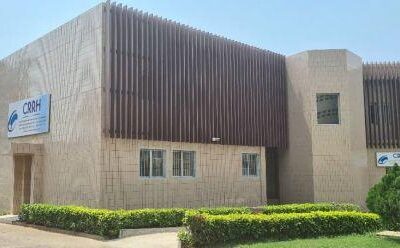
Climate change is also jeopardising water and energy security, exacerbating poverty, and negatively impacting sovereign credit ratings, the African Development Bank (AfDB) cautions, noting that it is the continent’s poorest and most vulnerable communities who are hardest hit by the crisis.
“Africa is in the eye of the storm from climate change, accounting for 9 out of the 10 most vulnerable countries to climate change globally,” Bank President Akinwumi Adesina told participants at a high-level roundtable on climate finance, held on the sidelines of the International Monetary Fund and World Bank spring meetings earlier this year.
“But Africa is not getting what it needs to adapt to climate change. Africa received just $30 billion per year for climate adaptation, while its needs are $277 billion per year, leaving a huge financing gap.”
This woeful underinvestment in climate action in Africa has prompted the AfDB to ramp up its commitment to climate finance. In 2023, climate change considerations were integrated into 97% of the Bank’s operations, with $5.8 billion allocated to climate financing. This represents 55% of all AfDB approvals. $2.7 billion was allocated to mitigation and $3.1 billion adaptation, the Bank’s latest investor presentation shows..
“The African Development Bank set a target to devote 40% of its total financing to climate finance. We have exceeded this target consistently over the past three years, reaching 55% in 2023,” Adesina noted.
The ambitious climate action window
The Bank has innovated and created the Climate Action Window as part of the 16th replenishment of its African Development Fund. Described by Adesina as “first among all multilateral development banks”, the Climate Action Window has drawn initial funding of $429 million from development partners Germany, the UK, The Netherlands, and Switzerland. The Bank plans to increase this to $13 billion.
“The Climate Action Window will directly support the low-income and most vulnerable countries on climate adaptation, mitigation, and technical assistance. The first call for proposals for adaptation elicited $4 billion of projects, ten times the size of the total facility, confirming the massive demand for adaptation finance by countries.”
The Climate Action Window is poised to make a significant development impact: 20 million farmers will gain access to climate-resilient agricultural technologies, 18 million people will benefit from sustainable and resilient water, sanitation, and health services, 9.5 million people will receive access to renewable energy, and a million hectares of degraded land will be rehabilitated.
Additionally, the African Adaptation Acceleration Programme—the flagship programme of the African Development Bank and the Global Center on Adaptation—is mobilising $25 billion for climate adaptation. It is the largest climate adaptation programme in the world.
The Bank highlights that Africa presents substantial greenfield investment opportunities to bolster climate action. The continent’s vast natural resources, including abundant sunlight and critical minerals, offer significant potential for climate adaptation and the global energy transition. Notably, Africa holds a considerable share of the world’s critical mineral resources, with 85% of manganese, 80% of platinum and chromium, 47% of cobalt, and 21% of graphite. These minerals are essential for producing electric vehicles and other green technologies, positioning Africa as a pivotal player in the global shift towards sustainable energy.










Comments